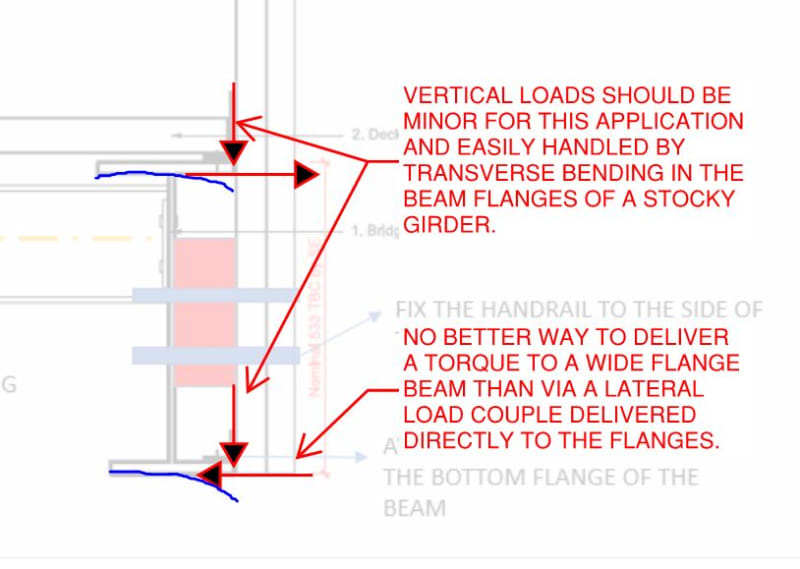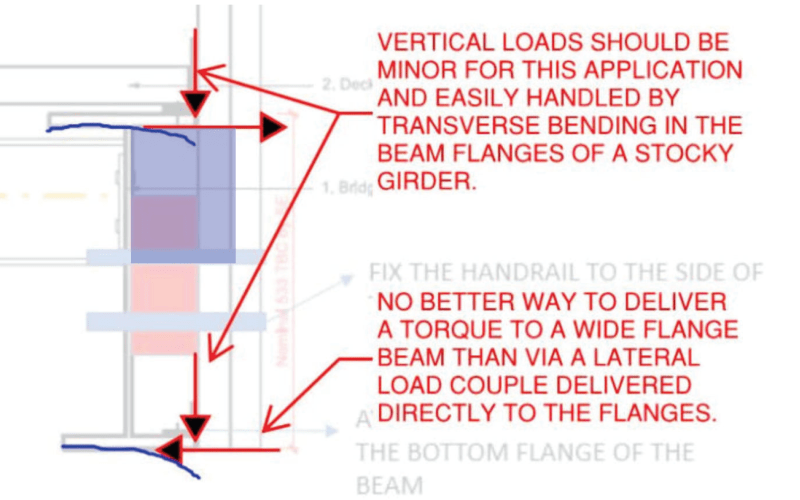Hi,
What check would you normally carry out to a steel I-Section beam when a balustrade will be fixed to the side of a steel beam web?
Obviously, the applied horizontal load to the balustrade will transform a moment to the steel beam. Is this a torsion check of the beam maybe? From my understanding, as the balustrade bottom fixing is connected to the side of the i-section beam (web), it will try to rotate it. On the other hand, the floor plate is a steel mesh with diagonal horizontal bracing to tie and restrain the I-Section beams. Can we argue that the applied moment will be resisted by the diagonal bracing?
Thanks
What check would you normally carry out to a steel I-Section beam when a balustrade will be fixed to the side of a steel beam web?
Obviously, the applied horizontal load to the balustrade will transform a moment to the steel beam. Is this a torsion check of the beam maybe? From my understanding, as the balustrade bottom fixing is connected to the side of the i-section beam (web), it will try to rotate it. On the other hand, the floor plate is a steel mesh with diagonal horizontal bracing to tie and restrain the I-Section beams. Can we argue that the applied moment will be resisted by the diagonal bracing?
Thanks


